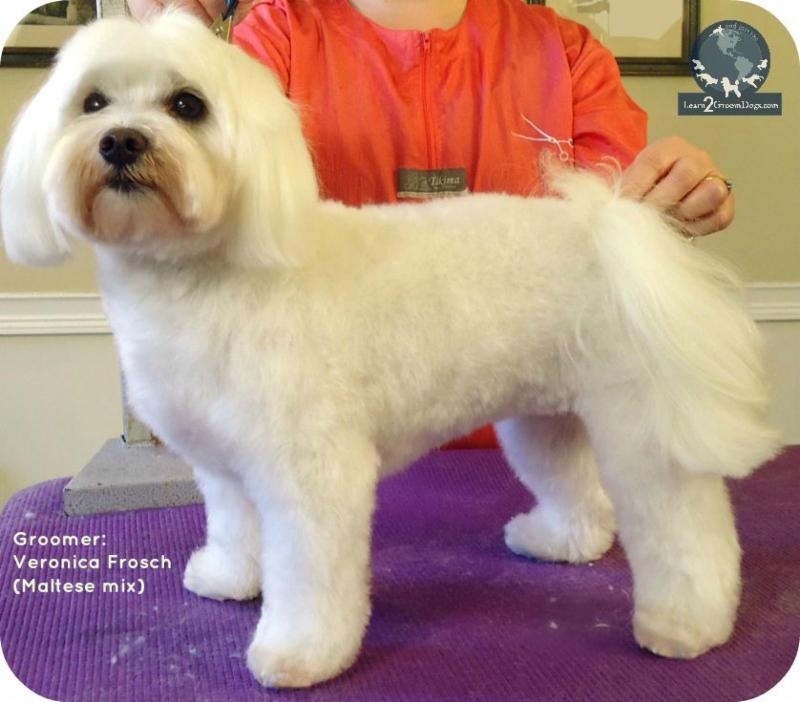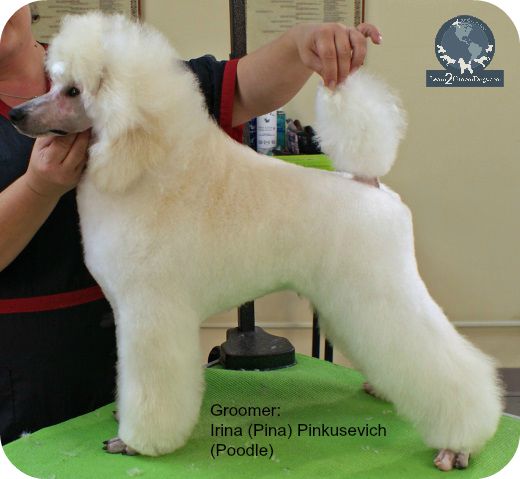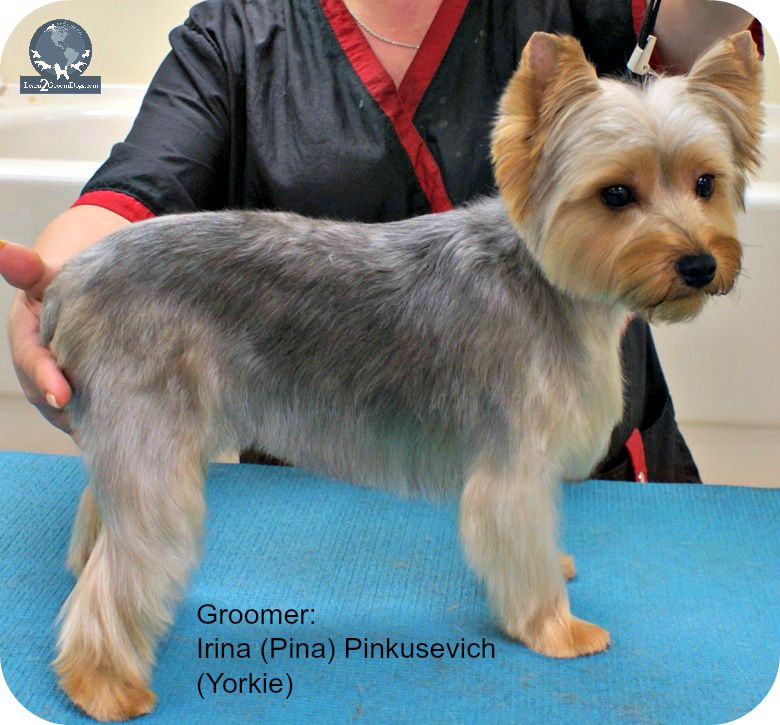Discovering the Meaning Behind the Job Titles
Groomer.
I have always struggled with this word. Stop and think about it. Is it really the best definition for the wide variety of skills necessary to do our job? Personally, I think the term “Groomer” is too broad a term to use within our field.
 Think about how the medical profession is organized… when you need a routine annual medical exam, do you book an appointment with a Podiatrist? No. You’d get an appointment at your regular clinic, where they deal primarily with routine and preventive health care. Depending on your condition, you might get an appointment with a nurse practitioner who is qualified to treat a certain spectrum of illnesses. For situations requiring more formal training and experience, you’d see your family doctor. If a health disorder required attention from an expert in a particular field of study, you would seek the help of a specialist.
Think about how the medical profession is organized… when you need a routine annual medical exam, do you book an appointment with a Podiatrist? No. You’d get an appointment at your regular clinic, where they deal primarily with routine and preventive health care. Depending on your condition, you might get an appointment with a nurse practitioner who is qualified to treat a certain spectrum of illnesses. For situations requiring more formal training and experience, you’d see your family doctor. If a health disorder required attention from an expert in a particular field of study, you would seek the help of a specialist.
Another point to ponder… how do you think their pay scale is structured? I would bet the medical specialist takes home a much larger paycheck than the nurse practitioner or even the family physician.
Let’s flip this over to what we do. Bottom line – we’re pet specialists with three distinct skill levels:
- Bather, Assistant, or Bathing Technician
- Groomer, Pet Groomer, or Grooming Technician
- Stylist or Pet Stylist
Here are my definitions for each of those areas.
1. Bather, Assistant, or Bathing Technician
These folks have a basic knowledge base of core grooming skills. In some cases, the Bather’s duties may cross over into other job descriptions. In many smaller salons, the Bather might act more as a personal assistant to the Groomer or Stylist. A Bather’s duties might include any task that could be easily delegated by the Groomer or Stylist so they can focus on getting dogs completed in a timely manner.
 Bathers, Assistants, and Bathing Technicians should have a basic understanding of:<
Bathers, Assistants, and Bathing Technicians should have a basic understanding of:<
- Selection and Care of Equipment
- Canine Psychology and Temperament
- Safety and Sanitation
- Anatomy
- Pet Handling
- Breed Identification
- Skin and Coat Conditions
- First Aid and CPR
- Parasites and Their Control
- Diseases and Preventive Vaccination
- Nutrition
- Common Illnesses and Skin Disorders
- Common Grooming Products
- Equipment Handling
- Coat Pre-Assessment and Pre-Work
- Bathing and Drying Skills
- Brushing and Combing Skills
- Mat Anatomy and Safe Removal
- Equipment Handling
- Nail and Feet Trimming
- Ear Cleansing
- Tooth Care
- Anal Gland Expression (Optional)
Although the Bather role in a busy salon is typically considered an entry level position, in reality it’s one of the most important roles of a successful salon. If a dog is not washed perfectly and dried properly, quality work can never be achieved. No matter how talented the Groomer or Stylist is when it comes to trimming and styling pets, they will never be able to do a good job on a dirty or incorrectly dried pet. Period.
Earning Potential – Entry Level
2. Groomer, Pet Groomer, or Grooming Technician
A Groomer deals with basic grooming needs. They can get dogs clean, dried properly, and thoroughly brushed out. They can do everything the Bather does but they kick it up a few notches. Groomers can complete challenging bath and brush pets with ease. Plus, they can trim pets safely and efficiently with clippers. Groomers are comfortable with a variety of clippers and blade choices. They can handle a wide range of coat types on both bath and brush style pets as well as simple, low maintenance haircuts. They have basic knowledge of how to work with scissors and blenders, getting adequate results for non-discriminating clients.
Pet Groomers should have advanced knowledge and understanding of the previously mentioned areas and be able to work with greater speed and efficiency without sacrificing quality and safety.
The Groomer in almost any salon is the workhorse. They focus on non-nonsense, low maintenance trim styles. Their concentration is on getting the dog thoroughly brushed out, mat free, and super tidy. Trim work focuses more on the neat and clean aspect of grooming than creating highly stylized haircuts. Advanced training and continued education in this area can vastly improve grooming speed, quality, and enjoyment of the job.
Earning Potential – Mid-Range Level
3. Stylist or Pet Stylist

A Pet Stylist molds and shapes the coat in a manner that accentuates the features of the pet. They have a firm understanding of anatomy, breed profiles, as well as structure and movement. They have a firm comprehension of technical skills. An accomplished Pet Stylist can apply those skills in an artistic manner. Their personal tools are of the highest caliber, allowing them to create remarkable trims in a very short amount of time. A seasoned Stylist will often also specialize in particular breeds, grooming techniques, or personality types.
Pet Stylists should have expert knowledge and understanding of the previously mentioned areas, be able to work with greater speed and efficiency without sacrificing quality and safety, and have expert control of clippers, shears, combs, brushes, blades, and stripping knives.
Serious Pet Stylists are generally highly motivated. They advance their careers through continued education. It’s common for an aspiring Pet Stylist to seek out many forms of advanced learning. Many of them turn it into a personal goal or an enjoyable outlet. Conformation dog shows, grooming trade shows and competitions, certification testing, books and magazines, videos, clinics, workshops, private coaching and training, and canine trials are just a few areas the motivated Stylist can use to ramp up skill levels.
Earning Potential – Highest Level
The term “Groomer” is just not descriptive enough. It just doesn’t cover it all – especially if you wear multiple hats in your salon like Receptionist, Accountant, and Cleaning Crew. When a business starts to grow, layers of expertise will develop within your team.
Just like in the medical profession, the more you learn, the more you earn. The stronger your knowledge base and the more proficient you are, the more money you’re going to make. And knowledge has a wonderful side effect – confidence. Why not take steps toward building your skills and confidence every day?
Using a generic term like “Groomer” just doesn’t work for me. I bet it doesn’t work for you, either. Jump over to the Learn2GroomDogs Facebook page and tell us what woks best for you!
Happy Trimming!
~ Melissa





 Do you agree with this post?
Do you agree with this post? 






 In my years of teaching new pet groomers, I’ve seen hundreds of dogs take advantage of a new students. Dogs pull, squirm, whine, snarl… and bite. I’ve seen many students frustrated to the point of tears.
In my years of teaching new pet groomers, I’ve seen hundreds of dogs take advantage of a new students. Dogs pull, squirm, whine, snarl… and bite. I’ve seen many students frustrated to the point of tears. Deep breathing can release stress and provide other noticeable health benefits. You will likely feel calmer after performing deep breathing exercises, and may trade feelings of anger or fear for a focused, relaxed state of mind. Most dogs will totally gravitate to this energy in a very positive way.
Deep breathing can release stress and provide other noticeable health benefits. You will likely feel calmer after performing deep breathing exercises, and may trade feelings of anger or fear for a focused, relaxed state of mind. Most dogs will totally gravitate to this energy in a very positive way.
 Don’t you love it when an owner walks into a salon and ask for this trim by name? They actually think this is a universal standard trim that all groomers and pet stylists should know how to do. When we start asking them questions, they get all huffy, thinking we don’t know how to do our jobs. Frustrating!! You and I know there isn’t a consistent right way to do a “puppy cut.” There are many – many variations!
Don’t you love it when an owner walks into a salon and ask for this trim by name? They actually think this is a universal standard trim that all groomers and pet stylists should know how to do. When we start asking them questions, they get all huffy, thinking we don’t know how to do our jobs. Frustrating!! You and I know there isn’t a consistent right way to do a “puppy cut.” There are many – many variations!
 It’s important to keep this in mind, too: one person’s interpretation of a puppy cut might be that of a smooth-coated puppy. Think Boxer, Pug, or Beagle. Another person’s interpretation would be that of a fluffier breed like a Shih Tzu, Bichon, or Poodle. There’s also a big difference between a four-week old puppy and a ten-week old puppy in terms of coat growth.
It’s important to keep this in mind, too: one person’s interpretation of a puppy cut might be that of a smooth-coated puppy. Think Boxer, Pug, or Beagle. Another person’s interpretation would be that of a fluffier breed like a Shih Tzu, Bichon, or Poodle. There’s also a big difference between a four-week old puppy and a ten-week old puppy in terms of coat growth. Here is a list of talking points when a new client request a “puppy cut.”
Here is a list of talking points when a new client request a “puppy cut.”
 By Melissa Verplank, CMG & Paragon Founder
By Melissa Verplank, CMG & Paragon Founder After a recent grooming session, our Maremmas came home looking and feeling great. However, although one looked amazing, a closer inspection told a different story. Her loose and shedding coat was still stuck next to her skin. In another week, we were going to have a mess. She was going to start leaving tufts of white fur everywhere. When done well, all the packed coat is removed and a comb will glide through the coat from the skin out. Each hair shaft stands independently. This wasn’t the case with this grooming.
After a recent grooming session, our Maremmas came home looking and feeling great. However, although one looked amazing, a closer inspection told a different story. Her loose and shedding coat was still stuck next to her skin. In another week, we were going to have a mess. She was going to start leaving tufts of white fur everywhere. When done well, all the packed coat is removed and a comb will glide through the coat from the skin out. Each hair shaft stands independently. This wasn’t the case with this grooming. A powerful high velocity dryer or “blaster” is the key to getting through this type of grooming job. A powerful stream of air from the high velocity dryer will do the bulk of the work for you when it comes to removing mats, tangles, and shedding coat. Ideally, you will want to have a condenser cone on the nozzle of the dryer when you first start the drying process. On well-behaved dogs who enjoy the high velocity dryer, two or even three high velocity dryers can be used to speed up the entire process. On pets that have a lot of mats, tangles, and densely packed coat, using a high velocity dryer with a condensing nozzle to blow the shampoo out of the coat on the second lather in the tub is a great trick. What do you do when you have a ring on your finger that you can’t get off? Apply soap, right? The same principle applies. The shampoo provides the lubrication and air pushes the hair apart. Easy on the dog – and easy on you.
A powerful high velocity dryer or “blaster” is the key to getting through this type of grooming job. A powerful stream of air from the high velocity dryer will do the bulk of the work for you when it comes to removing mats, tangles, and shedding coat. Ideally, you will want to have a condenser cone on the nozzle of the dryer when you first start the drying process. On well-behaved dogs who enjoy the high velocity dryer, two or even three high velocity dryers can be used to speed up the entire process. On pets that have a lot of mats, tangles, and densely packed coat, using a high velocity dryer with a condensing nozzle to blow the shampoo out of the coat on the second lather in the tub is a great trick. What do you do when you have a ring on your finger that you can’t get off? Apply soap, right? The same principle applies. The shampoo provides the lubrication and air pushes the hair apart. Easy on the dog – and easy on you. Be methodical. Be kind.
Be methodical. Be kind. 


 Learn2GroomDogs.com
Learn2GroomDogs.com






 Think about how the medical profession is organized… when you need a routine annual medical exam, do you book an appointment with a Podiatrist? No. You’d get an appointment at your regular clinic, where they deal primarily with routine and preventive health care. Depending on your condition, you might get an appointment with a nurse practitioner who is qualified to treat a certain spectrum of illnesses. For situations requiring more formal training and experience, you’d see your family doctor. If a health disorder required attention from an expert in a particular field of study, you would seek the help of a specialist.
Think about how the medical profession is organized… when you need a routine annual medical exam, do you book an appointment with a Podiatrist? No. You’d get an appointment at your regular clinic, where they deal primarily with routine and preventive health care. Depending on your condition, you might get an appointment with a nurse practitioner who is qualified to treat a certain spectrum of illnesses. For situations requiring more formal training and experience, you’d see your family doctor. If a health disorder required attention from an expert in a particular field of study, you would seek the help of a specialist. Bathers, Assistants, and Bathing Technicians should have a basic understanding of:<
Bathers, Assistants, and Bathing Technicians should have a basic understanding of:<